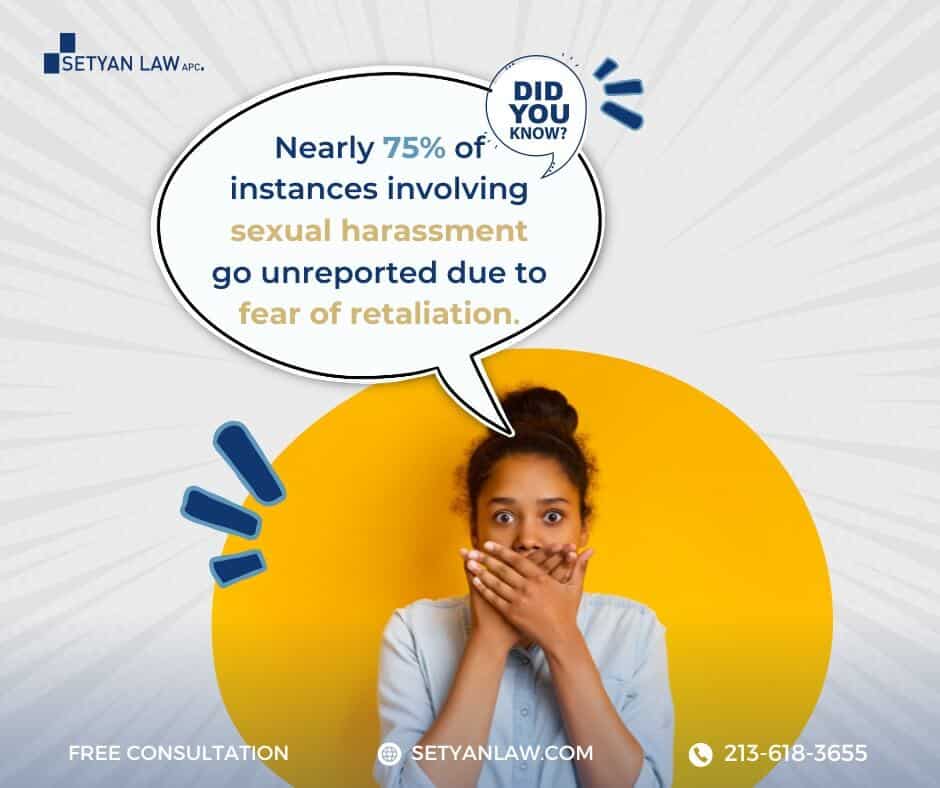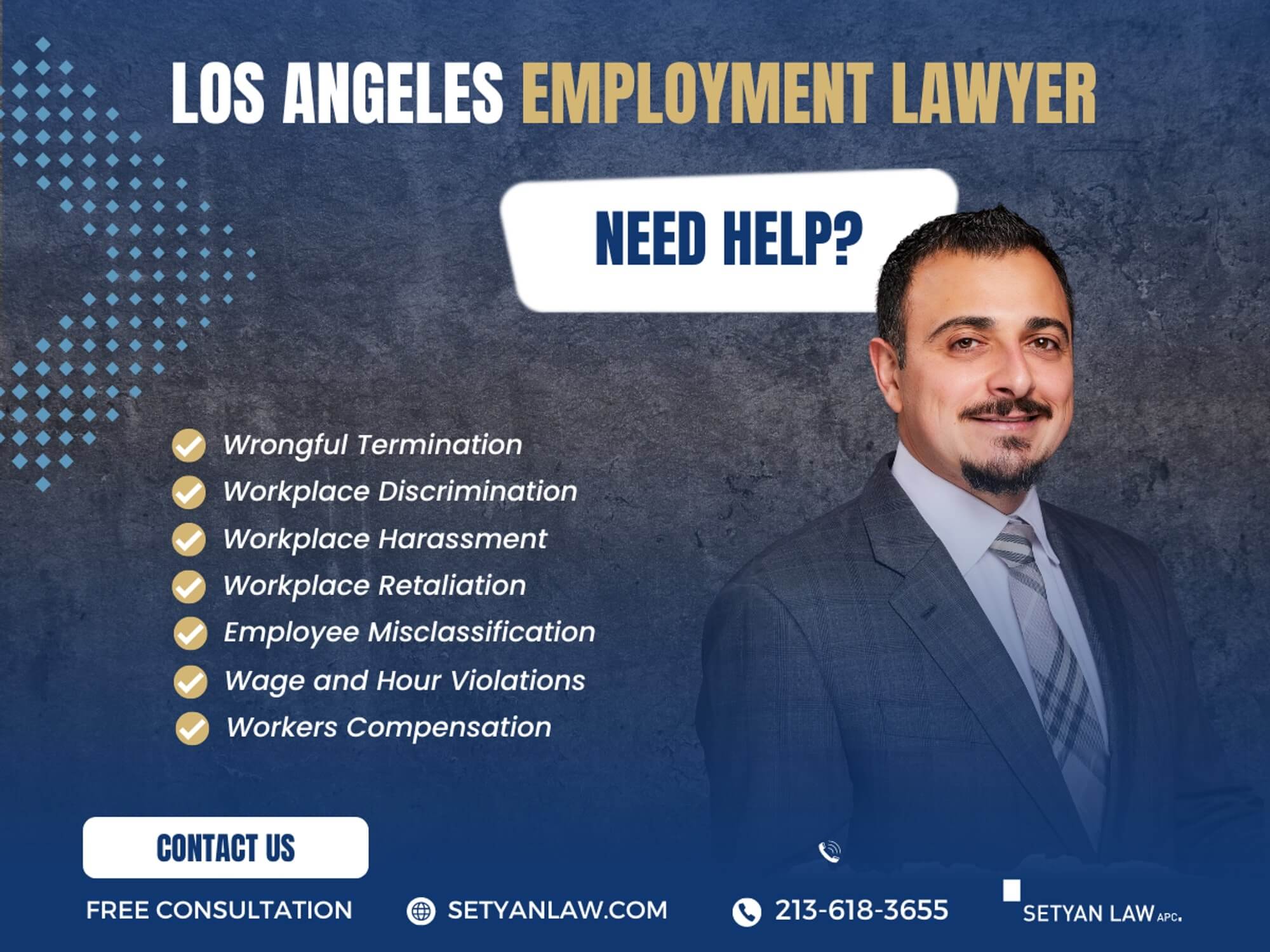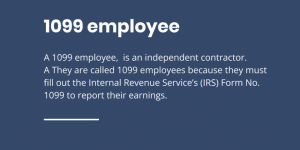Updated October 13, 2025
Handling Sexual Harassment Retaliation: An Expert Guide for 2025
Workplace retaliation affects nearly 68% of employees who report harassment or discrimination, making knowing how to deal with retaliation in the workplace essential for protecting your career and well-being. Whether you've experienced sudden schedule changes, unexpected negative reviews, or outright hostility after speaking up, you're not without options or protection.
Unfortunately, many employers attempt to punish employees who exercise their legal rights, despite clear laws prohibiting such behavior. Recognizing the signs of retaliation early and taking appropriate action can make the difference between a resolved situation and a derailed career. Importantly, retaliation doesn't always manifest as obvious termination – it often appears through subtle actions designed to make your work life difficult.
This comprehensive guide walks you through understanding what legally constitutes retaliation, identifying common signs, documenting incidents effectively, and pursuing appropriate legal remedies when necessary. By learning these essential strategies, you'll be equipped to protect both your professional standing and personal well-being while navigating this challenging workplace situation.
Understanding Workplace Retaliation
Retaliation stands as the most frequently alleged basis of discrimination in the federal sector, making it crucial to understand its legal definition before learning how to deal with retaliation in the workplace [1]. The harmful impact extends beyond individual targets, often poisoning the entire workplace culture.
What counts as retaliation under the law
Legally speaking, retaliation occurs when an employer takes a materially adverse action against an employee because that person engaged in legally protected activity [2]. Protected activities include filing an EEOC complaint, participating in workplace investigations, requesting disability accommodations, or simply reporting harassment to management [1].
The anti-retaliation provisions in federal laws such as Title VII of the Civil Rights Act, the Age Discrimination in Employment Act (ADEA), and the Americans with Disabilities Act (ADA) specifically prohibit employers from punishing employees who exercise these rights [2]. Notably, the protection applies even if the underlying complaint turns out to be unfounded, provided it was made in good faith [3].
For a retaliation claim to succeed, three elements must be present:
- The employee engaged in protected activity
- The employer took materially adverse action
- There is a causal connection between the protected activity and the adverse action [2]
Common forms of retaliation after reporting harassment
Although termination represents the most obvious form of retaliation, employers often use subtler methods that can be equally damaging. According to experts, retaliation typically manifests in both overt and covert ways [4].
Overt retaliation includes clear negative actions such as:
- Termination or demotion to a less desirable position
- Significant pay cuts or denial of deserved promotions
- Disciplinary actions for minor offenses
- Transfer to less desirable shifts or locations [5]
Meanwhile, covert retaliation can be harder to identify but equally detrimental. This might involve being excluded from important meetings, experiencing increased scrutiny from supervisors, receiving unwarranted negative performance reviews, or having vacation requests denied while similar requests from other employees are approved [4]. Even changes in work schedules that conflict with family responsibilities can constitute retaliation [1].
Why retaliation happens in the workplace
Fundamentally, retaliation serves as a mechanism for employers to discourage complaints and maintain the status quo. Research indicates that fear of retaliation is actually the primary reason employees remain silent about discrimination experiences [6].
Additionally, social dynamics within organizations often lead to negative perceptions of employees—particularly women and people of color—who report discrimination [6]. Some managers retaliate unconsciously, genuinely believing their actions are justified based on perceived "attitude problems" or "lack of team spirit" that emerge after an employee files a complaint [3].
The "manner of the complaint" doctrine further complicates matters, as courts rarely question an employer's claim that an employee's complaint was presented in an insubordinate manner [6]. This creates a catch-22 situation where speaking up about workplace issues in any manner might be deemed problematic.
Understanding these dynamics is the first essential step in developing strategies to deal with retaliation effectively. By recognizing what constitutes illegal retaliation, you can better protect your rights and take appropriate action if you experience retaliatory behavior.
How to Recognize Signs of Retaliation
Recognizing the warning signs of workplace retaliation serves as your first line of defense against unfair treatment. Since retaliation often starts subtly before escalating, identifying these signs early allows you to address the situation proactively. Let's examine the most common indicators that suggest you might be experiencing retaliation at work.
Sudden changes in job duties or schedule
One of the earliest signs of retaliation involves unexpected modifications to your work arrangements. Following a protected activity like reporting harassment, employers might transfer you to a less desirable position or department without reasonable justification. Consequently, you might find yourself reassigned to tasks far below your skill level or expertise.
Schedule changes can likewise signal retaliation, especially when they create personal hardship. For instance, an employer might deliberately alter your work hours to conflict with family responsibilities or childcare arrangements. This tactic becomes particularly suspicious when it occurs shortly after you've exercised your legal rights. Furthermore, sudden transfers to less favorable shifts or locations – especially when other employees aren't experiencing similar changes – often indicate retaliatory intent.
Unwarranted negative performance reviews
Performance evaluations provide another avenue for retaliation. A sudden drop in performance ratings without corresponding changes in your actual performance raises red flags, especially following a complaint or protected activity. In essence, these undeserved negative evaluations create a paper trail that employers can later use to justify termination or demotion.
Pay attention to feedback that contradicts previous positive reviews or verbal praise. Additionally, being penalized for actions that weren't issues before your protected activity suggests potential retaliation. Courts have recognized that negative performance evaluations can constitute adverse employment actions, particularly when they precede eventual termination or other detrimental changes to employment conditions.
Being excluded from meetings or projects
Social and professional isolation represents another common retaliation tactic. After engaging in protected activity, you might notice yourself:
- Being intentionally left out of important meetings you previously attended
- No longer receiving invitations to training sessions or professional development opportunities
- Being excluded from workplace social gatherings without explanation
- Having colleagues suddenly unwilling to collaborate or share necessary work information
This exclusion creates a hostile environment while simultaneously limiting your ability to perform effectively or advance professionally.
Increased scrutiny or micromanagement
Heightened oversight often signals retaliatory intent. Following a complaint, you might experience excessive monitoring of your work, with supervisors suddenly scrutinizing every action and documenting minor mistakes that would be overlooked for others. This increased level of supervision frequently manifests as:
Setting unrealistic deadlines or expectations, assigning excessive workload compared to colleagues, requiring unnecessary documentation for routine tasks, or nitpicking insignificant details in your work.
As confirmed by court rulings, employers sometimes use heightened scrutiny to "watch and wait" for opportunities to find justification for disciplinary action. Initially subtle, this scrutiny gradually builds a case against employees who have lodged discrimination complaints, ultimately creating documentation to support termination or other adverse actions.
Recognizing these warning signs represents your first crucial step in learning how to deal with retaliation in the workplace effectively. Once identified, you can begin documenting incidents and taking appropriate action to protect your rights and career.
Steps to Take Immediately After Experiencing Retaliation
Taking immediate action is crucial once you suspect workplace retaliation. The steps you take in the immediate aftermath can significantly strengthen your position should you need to file a formal complaint or legal claim. Here's how to protect yourself effectively.
Start documenting every incident
Creating a detailed paper trail transforms vague allegations into concrete evidence. Start by establishing a comprehensive timeline of events—both before and after your protected activity. Record each incident with precise dates, times, locations, and names of people involved. Moreover, include a thorough description of what occurred and how it differed from normal workplace procedures or previous treatment.
Contemporaneous documentation—records created at or near the time events occur—carries substantially more weight in legal proceedings than memories recalled later. As such, maintain a dedicated notebook or digital file specifically for this purpose. Whenever possible, make entries immediately after incidents occur rather than trying to reconstruct events days or weeks later.
If you've already experienced retaliation before starting documentation, don't worry. Begin recording immediately, noting your best recollection of past events while clearly indicating you're documenting from memory. Then look for supporting evidence like calendar entries or emails that might corroborate your timeline.
Save all written communication
Written records serve as powerful evidence in retaliation cases. Preserve all relevant communications including:
- Emails (both work and personal accounts if used for work purposes)
- Text messages and direct messages on workplace platforms
- Memos, written notifications, and performance reviews
- Voicemails (transcribe them if possible)
- Posted announcements that affect you
Beyond just keeping these records, consider forwarding important communications to a personal email account or storing them on a cloud-based service. This precautionary measure ensures you maintain access even if you lose access to work accounts. However, be mindful of confidentiality policies at your workplace when transferring documents.
Identify potential witnesses
Witness testimony often provides crucial support for retaliation claims. Colleagues who observed the retaliatory behavior or heard threatening comments from managers can significantly strengthen your case. Whenever an incident occurs, mentally note who was present and might have witnessed the event.
Approach potential witnesses discreetly and, when appropriate, ask if they would be willing to provide a statement about what they observed. Former employees can be particularly valuable witnesses as they're no longer under the employer's influence and may speak more freely about what they experienced or observed.
For each potential witness, record their contact information and focus on obtaining statements about direct observations rather than opinions or hearsay. Remember that contemporaneous witness statements carry more weight than those collected months after incidents occurred. Hence, try to secure these statements while events are still fresh in people's minds.
By taking these immediate steps after experiencing retaliation, you'll build a foundation of evidence that supports your case and potentially discourages further retaliatory actions.
Reporting and Legal Options Available
After collecting evidence, pursuing formal action becomes the next critical step in addressing workplace retaliation. Understanding the available reporting channels and legal protections enables you to effectively advocate for your rights.
How to report retaliation internally
The first step in addressing retaliation typically involves following your company's established grievance procedures. Start by submitting a formal written complaint to your HR department or a higher authority within your organization. This documentation creates an official record and gives your employer an opportunity to address the situation before external escalation becomes necessary.
In your report, clearly connect the retaliatory actions to your initial protected activity. Be specific about dates, times, and patterns of behavior. Keep copies of all communications, as these records could prove invaluable should further action be required. Given that participating in a complaint process is protected under all circumstances, your employer cannot legally punish you for making this internal report [7].
When to contact an employment lawyer
Consider consulting an employment attorney if your internal complaint doesn't resolve the issue or if the retaliation is severe. Legal guidance becomes particularly important when:
- Your employer denies your complaint without proper investigation
- Retaliation continues or intensifies after reporting
- You've been terminated or faced serious adverse actions
- You're approaching filing deadlines for government agencies
An employment lawyer will evaluate your case by examining evidence of your protected activity, the adverse actions taken against you, and the causal connection between them [8]. Most attorneys offer free initial consultations to assess the strength of your potential claim [8].
Filing a complaint with the EEOC
The Equal Employment Opportunity Commission (EEOC) handles workplace retaliation complaints related to discrimination. To file a complaint:
- Submit a charge of discrimination within 180 days of the retaliatory act (300 days in some states) [9]
- Provide detailed information about your situation through the EEOC's public portal
- Participate in the subsequent investigation
- If the EEOC cannot resolve your case, they will issue a "Right to Sue" letter [10]
Remember that retaliation is the most frequently alleged basis of discrimination in the federal sector [7], making the EEOC well-equipped to address such complaints.
Understanding your rights under federal and state laws
Multiple laws protect employees from workplace retaliation. Title VII of the Civil Rights Act shields workers who report discrimination or harassment [10]. The Americans with Disabilities Act (ADA) protects those who request reasonable accommodations, while the Fair Labor Standards Act (FLSA) safeguards employees who report wage and hour violations [10].
In California, for instance, the Labor Commissioner's Office enforces over 45 laws prohibiting retaliation and discrimination [11]. Notably, recent legislation like California's SB 497 (effective January 2024) creates a rebuttable presumption of retaliation if adverse action occurs within 90 days of protected activity [12].
Understanding these protections empowers you to navigate the complex legal landscape confidently as you address workplace retaliation.
Protecting Your Mental and Professional Well-being
Experiencing workplace retaliation takes a substantial toll on your psychological wellbeing. Indeed, workplace injustice can be the number one source of stress for many Americans [13]. Addressing both your mental health and professional standing requires deliberate strategies during this challenging period.
Seeking emotional support or therapy
Workplace retaliation often triggers anxiety, depression, and feelings of betrayal [14]. Consider connecting with a mental health professional who can provide tools for managing stress. Support groups or counseling services specifically help you process feelings of isolation that commonly emerge after reporting workplace issues [15]. Professional evaluation also creates documentation that might strengthen any emotional distress claims [16].
Maintaining professionalism at work
Throughout this difficult period, continue performing your job duties diligently [17]. Maintaining professionalism serves both your retaliation claim and long-term career interests. Document your continued strong performance to counter any negative evaluations. Obviously, this approach requires patience and perseverance [1], primarily because retaliation cases rarely resolve quickly.
Exploring job transition if needed
Sometimes, standing up for your rights ultimately leads to better professional opportunities in more respectful environments [15]. Before making any decisions, carefully assess whether the workplace climate can improve. Thereafter, make an informed decision about transitioning, understanding your rights and the potential consequences of leaving [13]. Many employees find that removing themselves from toxic environments benefits their mental wellbeing and career trajectory.
Conclusion
Workplace retaliation represents a serious challenge facing many employees who simply exercise their legal rights. Throughout this guide, we've examined the critical aspects of identifying, documenting, and addressing retaliatory behavior. Undoubtedly, the most powerful tool at your disposal remains thorough documentation—creating a detailed record of incidents immediately after they occur provides essential evidence should you need to escalate your complaint.
Acting quickly after experiencing retaliation significantly improves your chances of resolution. First, follow your company's internal reporting procedures while simultaneously preserving all relevant communications. Subsequently, if internal channels prove ineffective, external options through government agencies or legal representation become necessary steps.
Remember that retaliation takes numerous forms beyond obvious termination. Subtle changes like exclusion from meetings, unwarranted negative reviews, or increased scrutiny often signal retaliatory intent. The ability to recognize these warning signs early allows you to take protective measures before more severe consequences develop.
Your mental wellbeing deserves equal attention during this challenging process. Professional support through counseling or therapy helps manage the psychological impact while maintaining workplace performance. Meanwhile, knowing when to consider job transitions represents a practical consideration if your workplace environment becomes untenable.
The laws protecting employees from retaliation exist specifically because speaking up requires courage. You deserve a workplace free from punishment for exercising your rights. Armed with knowledge about retaliation signs, documentation strategies, and available legal protections, you now stand better prepared to address unfair treatment effectively. Though navigating workplace retaliation presents challenges, your informed actions can protect both your career and wellbeing while potentially creating positive change within your organization.
Call Setyan Law at (213)-618-3655 to schedule a free consultation.







